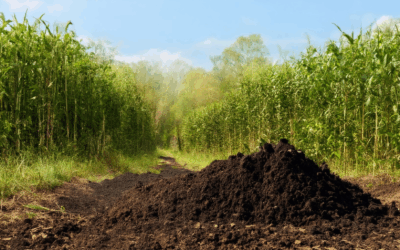Sustainability has become a cornerstone of modern living, with individuals and families seeking ways to reduce their environmental impact while maintaining a comfortable lifestyle. From reducing waste and conserving resources to adopting eco-friendly habits, sustainable household practices are not just trends—they’re essential for creating a healthier planet for future generations. In this article, we’ll explore a variety of sustainable practices that can easily be incorporated into everyday life, offering practical tips and examples to help you make a positive difference. Whether it’s through smarter shopping habits, innovative recycling solutions, or simple adjustments in your cleaning routine, discover how small changes can lead to significant environmental benefits. Join us as we delve into the world of sustainable living, where every action counts and every choice matters.
Key Takeaways
- Adopt low-flow fixtures to conserve water and reduce utility bills.
- Use energy-efficient appliances to lower energy costs and decrease your carbon footprint.
- Implement recycling programs to minimize waste and support sustainable resource management.
- Choose biodegradable cleaning products to protect ecosystems and avoid harmful chemical runoff.
- Install HEPA filter-equipped vacuums to enhance indoor air quality and reduce allergens.
- Hire locally to support your community and reduce emissions from long-distance hiring.
- Integrate smart devices for lighting and HVAC systems to boost energy savings.
- Educate guests about sustainable practices to foster eco-conscious habits.
- Organize your space efficiently with the 5S methodology: Sort, Set in Order, Sweep, Standardize, and Sustain for better productivity and less clutter.
- Standardize routines to create consistency and reduce errors in your workflow.
- Maintain a clean environment to ensure safety and efficiency in your workspace.
- Continuously monitor and update your organizational systems to keep them effective over time.
- Practice sustainable habits like composting to create nutrient-rich soil and reduce landfill waste.
- Transition to renewable energy sources such as solar panels to help combat climate change.
- Support local farmers by purchasing organic or locally-grown produce to promote sustainable agriculture.
- Reduce your water usage with rainwater harvesting systems or low-flow fixtures.
- Get involved in community initiatives to contribute to environmental conservation efforts.
- Start small by adopting one sustainable habit at a time to create a meaningful impact.
- Explore more resources and tips on sustainable living by visiting Pyrolysium.

What Sustainable Practices Do You Do at Home?
I incorporate several sustainable practices into my daily life to minimize my environmental impact. Here are some of the key initiatives I undertake:
- Composting:** I started composting kitchen scraps and yard waste to create nutrient-rich soil for planting. This not only reduces landfill waste but also supports local gardening efforts.
- Low-Flow Fixtures:** I installed low-flow showerheads and taps to conserve water, which helps reduce my overall water usage.
- Solar-Powered Gadgets:** I use solar-powered lawn mowers and garden tools, which run on renewable energy and emit fewer emissions compared to traditional fossil fuels.
- Rainwater Collection:** I set up a simple rainwater harvesting system to water my plants during dry seasons, which significantly reduces my reliance on municipal water supplies.
- Plant-Based Diet:** I primarily eat a plant-based diet, which has a lower environmental footprint than meat-intensive diets. I also opt for cage-free and organic animal products when available.
- Local and Seasonal Foods:** I prioritize purchasing fruits, vegetables, and dairy from local farmers’ markets to support sustainable agriculture and reduce transportation emissions.
- Reduction of Plastic Use:** I use reusable water bottles, cloth bags, and stainless steel containers to minimize my plastic consumption. I also avoid using single-use plastics like straws and disposable utensils.
- E-Waste Recycling:** I ensure that all old electronics are recycled through designated programs to prevent toxic waste in landfills.
- Food Waste Management:** I practice portion control and proper storage to reduce food waste. I also participate in community fruit-sharing initiatives to help redistribute surplus produce.
- Sustainable Fashion:** I shop at thrift stores and support brands that use sustainable materials and ethical production practices. I also repair clothing instead of discarding them when possible.
- Public Transportation and Biking:** I commute by bike or walk whenever possible. When necessary, I carpool with friends to reduce fuel consumption.
- Renewable Energy Support:** I switched my home electricity provider to a company that offers 100% renewable energy sources, helping to offset my carbon footprint.
- Eco-Friendly Cleaning Products:** I replaced conventional cleaning agents with natural alternatives like white vinegar and baking soda to reduce exposure to harmful chemicals.
- Awareness and Education:** I actively share information about sustainable practices on social media and engage in discussions to encourage others to adopt eco-friendly habits.
By integrating these practices into my daily routine, I am making a conscious effort to contribute positively to the environment while promoting a healthier lifestyle for myself and future generations.
Sustainable Lifestyle Practices
Adopting a sustainable lifestyle involves making mindful choices that minimize environmental impact while maximizing benefits for both personal well-being and the planet. Here are some practical examples:
- Reduce Waste: Practice the 3 Rs – Reduce, Reuse, Recycle. Plan meals to minimize food waste, store leftovers properly, and recycle materials effectively.
- Conserve Energy: Opt for energy-efficient appliances, turn off lights and electronics when not in use, and choose renewable energy sources when possible.
- Sustainable Shopping: Buy locally-sourced, organic, and fair-trade products to support eco-friendly practices and fair labor practices.
- Diy Projects: Create your own household products like reusable cloth wipes, natural cleaning solutions, and DIY beauty products to reduce plastic waste.
- Eco-Friendly Transportation: Use public transport, bike, walk, or carpool to reduce carbon emissions. Consider purchasing an electric vehicle for a low-emission option.
- Support Local Businesses: Shop at farmers’ markets, craft fairs, and small businesses to keep money in the community and reduce the environmental footprint of mass production.
- Minimize Plastic Use: Use reusable containers, bottles, and wraps. Avoid single-use plastics and opt for biodegradable alternatives when necessary.
- Plant Trees: Participate in tree-planting initiatives or start your own tree nursery to contribute to reforestation efforts and improve air quality.
- Reduce Food Miles: Purchase seasonal and locally-grown foods to cut down on transportation emissions associated with imported goods.
- Use Rainwater Harvesting: Install a rainwater collection system to conserve water and reduce your reliance on treated tap water.
- Compost: Turn kitchen scraps and yard waste into nutrient-rich compost to enrich soil and reduce landfill waste.
- Switch to Solar Power: Install solar panels on your home to generate clean, renewable energy and reduce your dependence on the grid.
- Participate in Community Cleanups: Join local clean-up drives to help maintain public spaces and promote a sense of community responsibility toward the environment.
By integrating these practices into daily life, individuals can significantly reduce their ecological footprint while enjoying the benefits of a healthier, more intentional lifestyle.

7 Ways to Live More Sustainably
- Reduce your carbon footprint by adopting renewable energy sources like solar power or wind energy. Learn more about sustainable energy options
- Minimize waste by recycling, composting organic materials, and purchasing products made from recycled materials. Discover effective waste management techniques
- Conserve water by fixing leaks, installing water-saving fixtures, and avoiding excessive water usage. Explore water conservation strategies
- Support local farmers and sustainable agriculture by buying organic, locally-grown foods. Find out more about organic farming
- Use public transportation, bike, or walk whenever possible to reduce greenhouse gas emissions. Check out sustainable transportation alternatives
- Choose products made from sustainable materials, such as bamboo, hemp, or recycled wood. Browse our guide to sustainable products
- Get involved in community initiatives aimed at preserving natural habitats and promoting environmental awareness. Join our environmental initiatives

Sustainable Housekeeping Practices
Sustainable housekeeping practices are essential for reducing environmental impact while maintaining hygiene and efficiency. Here are some key strategies:
- Water Efficiency: Install low-flow fixtures like faucets, showerheads, and toilets to conserve water usage.
- Energy Conservation: Use energy-efficient appliances and implement automated systems to turn off lights and electronics when not in use.
- Waste Management: Establish recycling programs and encourage towel and linen reuse programs to minimize waste.
- Cleaning Products: Opt for biodegradable and non-toxic cleaning agents to reduce chemical runoff and harm to the environment.
- Air Quality: Use HEPA filter-equipped vacuums to improve indoor air quality and reduce dust and allergen buildup.
- Local Hiring: Employ local staff to support the community and reduce transportation emissions associated with long-distance hiring.
- Technology Integration: Utilize smart devices for lighting and HVAC systems to enhance energy savings.
- Guest Education: Inform guests about sustainable practices and provide recycling bins in guest rooms to encourage participation.
By adopting these practices, hotels can significantly reduce their environmental footprint while delivering high-quality service to guests.
What are the 5 good housekeeping practices?
The 5S methodology, often referred to as 5S, is a simple yet effective approach to maintaining organization and productivity in any workspace. Here are the five key components:
- Sort : Organize items by type, size, or frequency of use. This ensures quick access and reduces clutter.
- Set in Order : Place tools, equipment, and materials in their designated locations. This minimizes the risk of misplacement and improves workflow efficiency.
- Sweep : Clean and remove obstacles from walkways and work areas. A clean environment enhances safety and productivity.
- Standardize : Establish consistent procedures and layouts. This reduces variability and errors, fostering a more streamlined operation.
- Sustain : Continuously monitor and maintain the organized state. Regular review and updating ensure long-term effectiveness of the 5S practices.

Example of a Sustainable Practice
Sustainable practices are habits and actions that contribute positively to the environment, economy, and community. Here’s an example of a sustainable practice:
- Composting household waste to create nutrient-rich soil and reduce landfill dependency.
- Using renewable energy sources like solar panels to power homes and reduce carbon emissions.
- Participating in local recycling programs to minimize waste sent to landfills.
- Reducing water usage through rainwater harvesting systems or low-flow fixtures.
- Supporting sustainable agriculture by purchasing organic or locally-grown products.
- Joining community initiatives or volunteer groups focused on environmental conservation.
These practices not only benefit the environment but also promote long-term sustainability for future generations.
Conclusion
Sustainable practices can be simple yet impactful. Start with one small change today and gradually incorporate more sustainable habits into your daily life. Together, we can create a healthier planet for everyone.
For more resources and tips on adopting sustainable practices, visit our website: Pyrolysium .




0 Comments